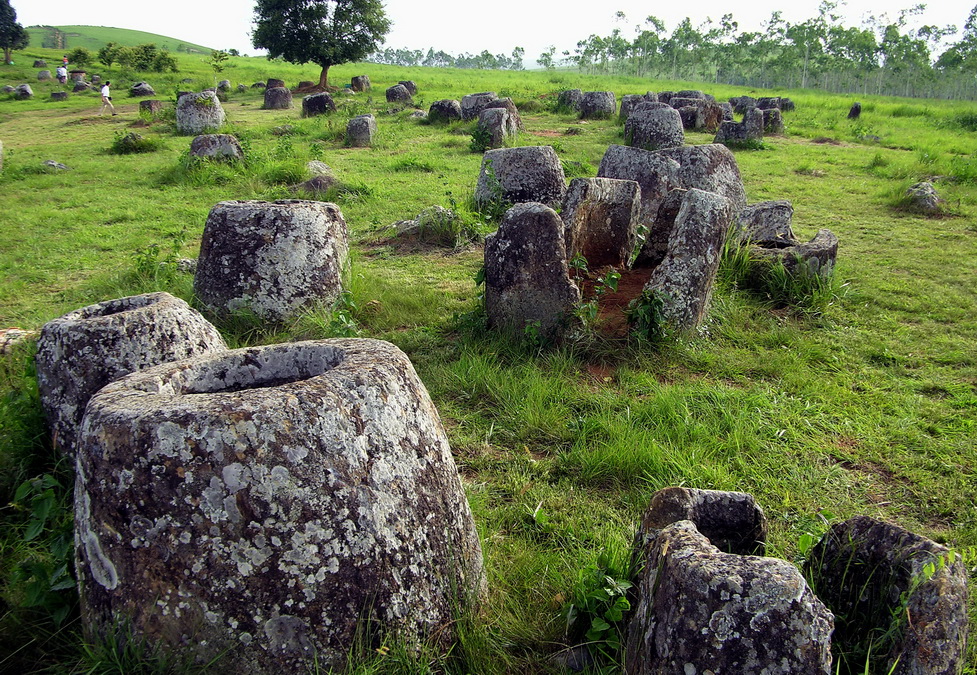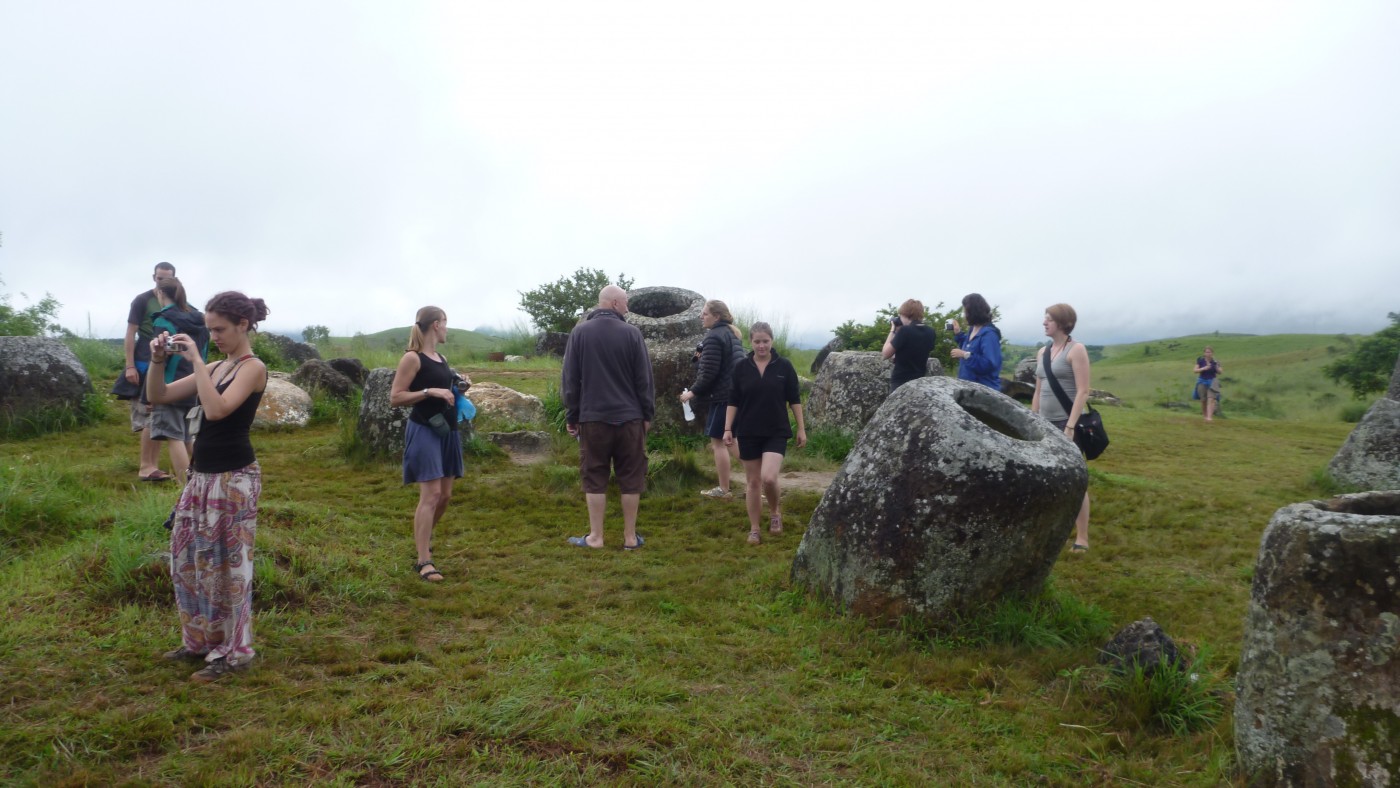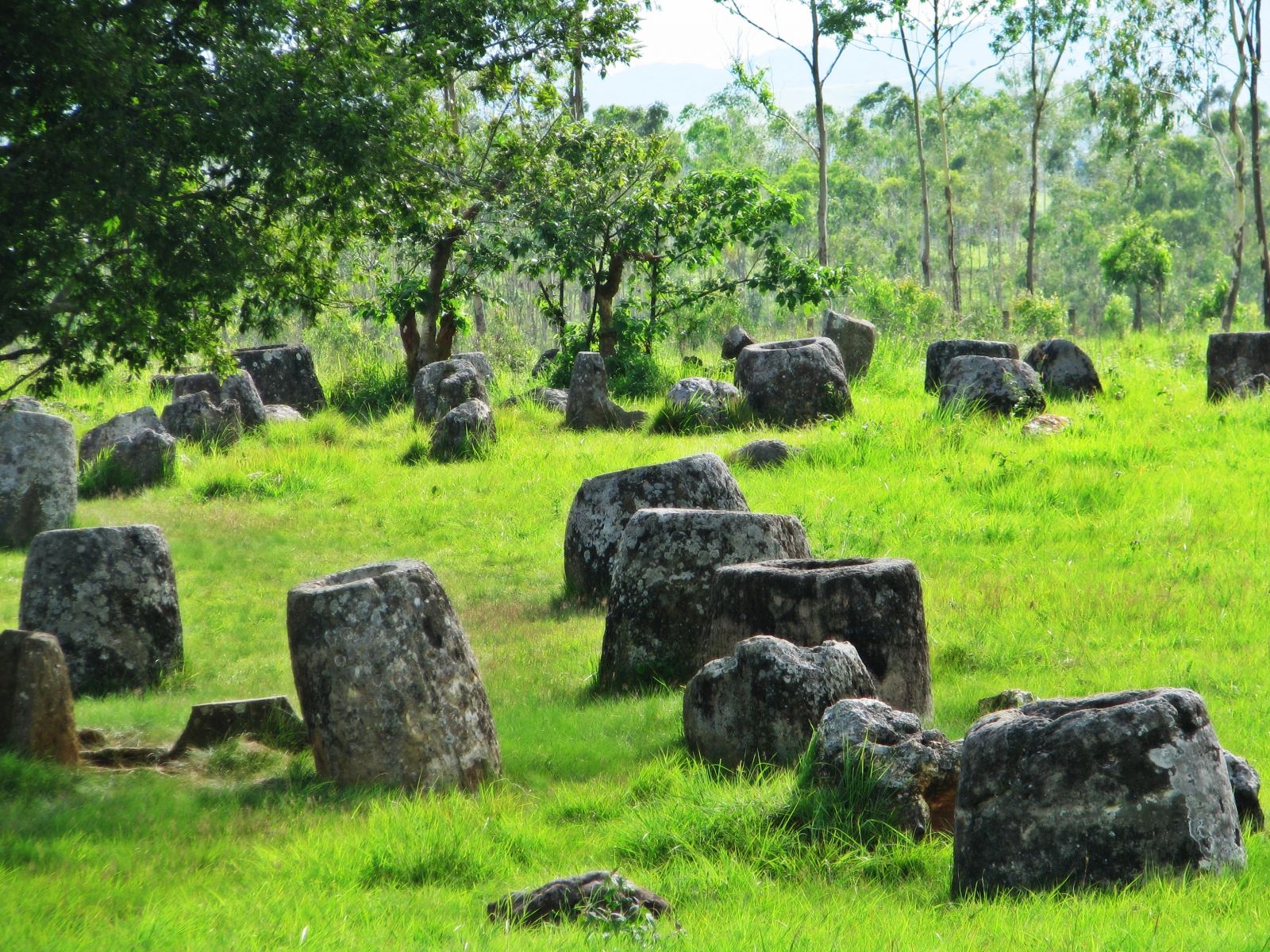The Plain of Jars is a megalithic archaeological landscape in Laos. It consists of thousands of stone jars scattered around the upland valleys and the lower foothills of the central plain of the Xiangkhoang Plateau. The jars are mostly arranged in clusters ranging in number from one to several hundred.
.jpg)
The Xieng Khouang Plateau is located at the northern end of the Annamese Cordillera, the principal mountain range of Indochina. French researcher Madeleine Colani concluded in 1930 that the jars were associated with prehistoric burial practices. Excavation by Lao and Japanese archaeologists in the intervening years has supported this interpretation with the discovery of human remains, burial goods and ceramics around the jars. The Plain of Jars is dated to the Iron Age (500 BC to AD 500) and is one of the most important prehistoric sites in Southeast Asia.

During the Vietnam War this area got hit hard and some of the bombs did not go off. Site 1 is where the biggest jar is located. While Site 2 and 3 offer picturesque views of farmlands and villages as they sit on top of small hills.
The Plain of Jars is considered the most distinctive and enigmatic of all Laos’ attractions. The large area around Phonsavan, the main city of Xieng Khouang Province is dotted with stone jars but no one has a clear idea as to why they are there.

The mysterious jars were carved from both sandstone and granite in various sizes from very small to about 3.5 metres high are strewn all over the plateau –carved out of solid hunks of rock from surrounding mountains, no one really knows why they are there and are thought to be more than 2,000 years old. Legend has it that they were made to store rice wine while some believe they were for storing the dead. Until today the function of the jars is still disputed.

Theories range from the view that they were made to store wine for a huge party to celebrate the conquest of Pakhanh City (Xieng Khouang). Other archeologists believe they were made to store dead human bodies, as was the practice of ancient believers. No one really knows.












